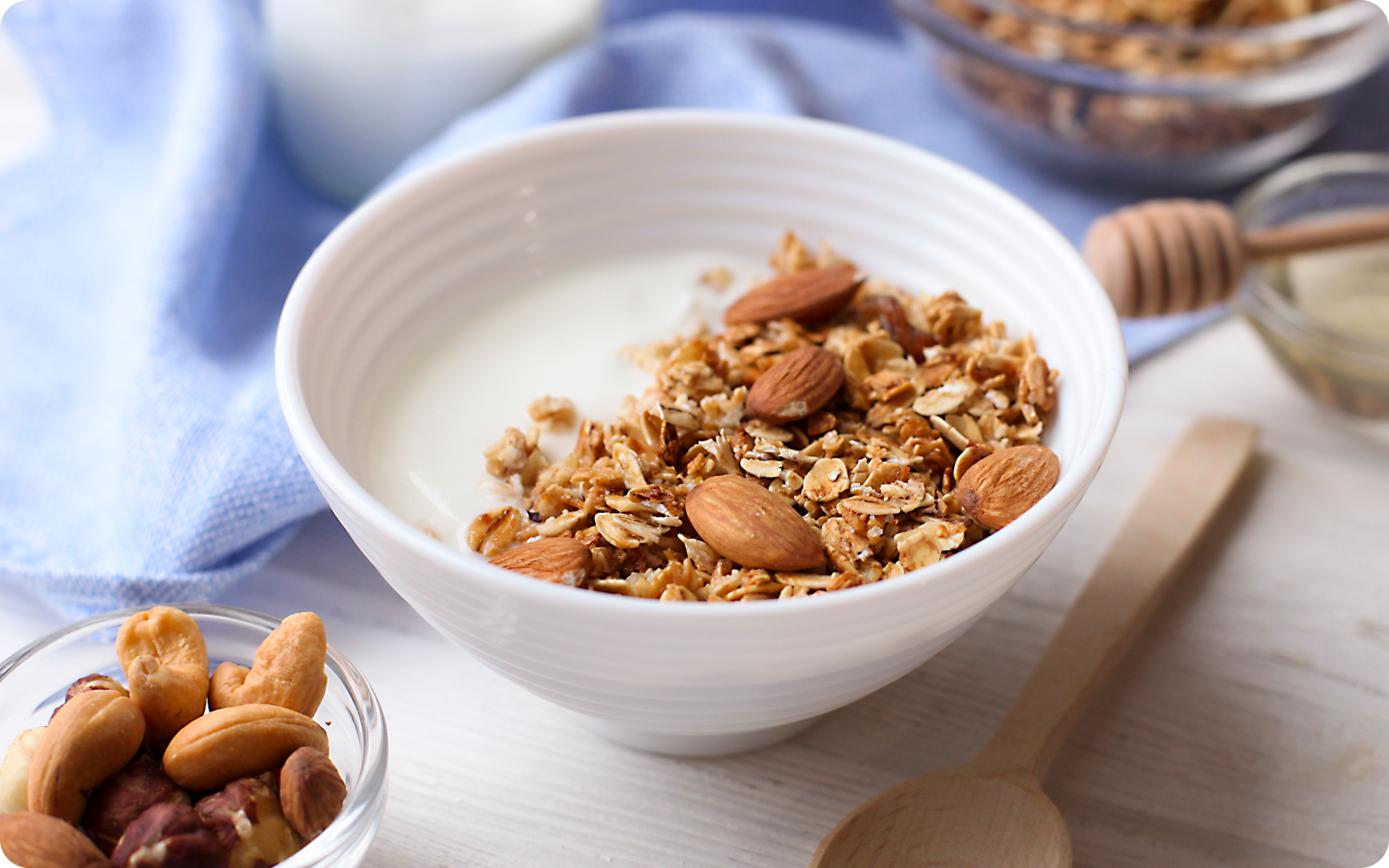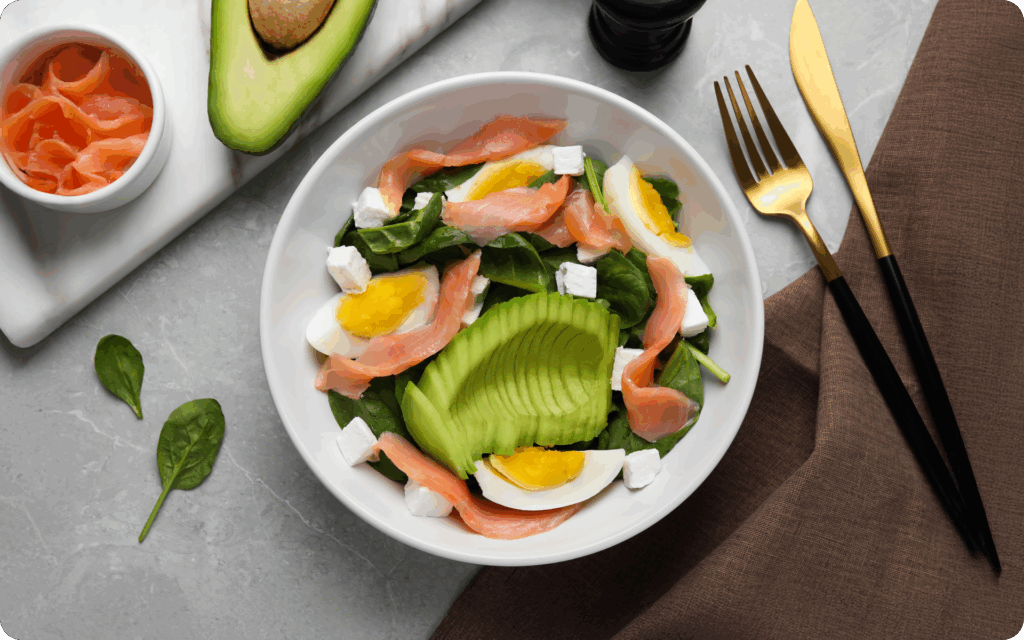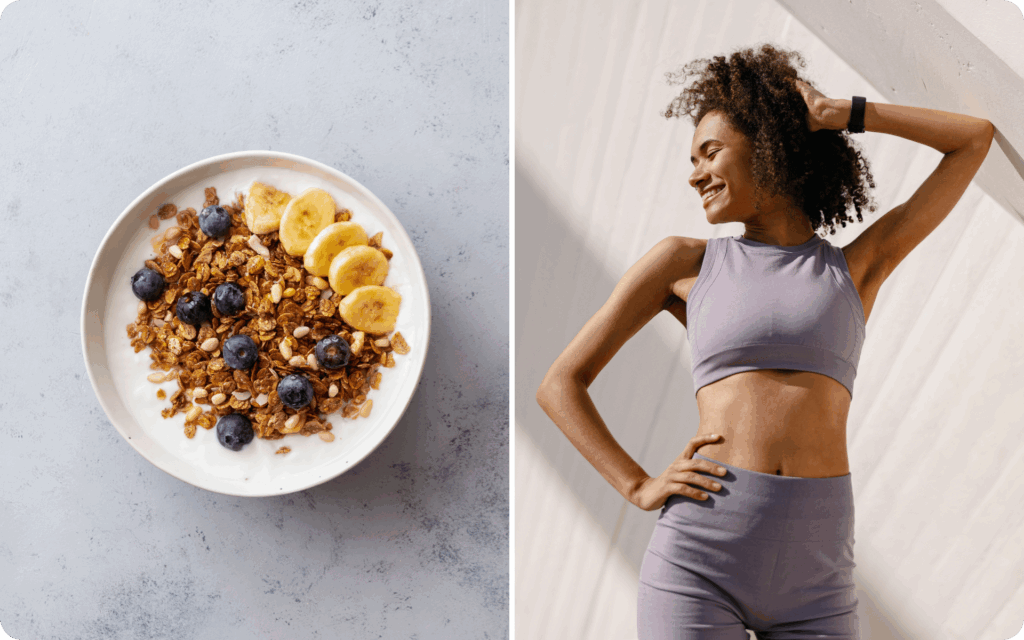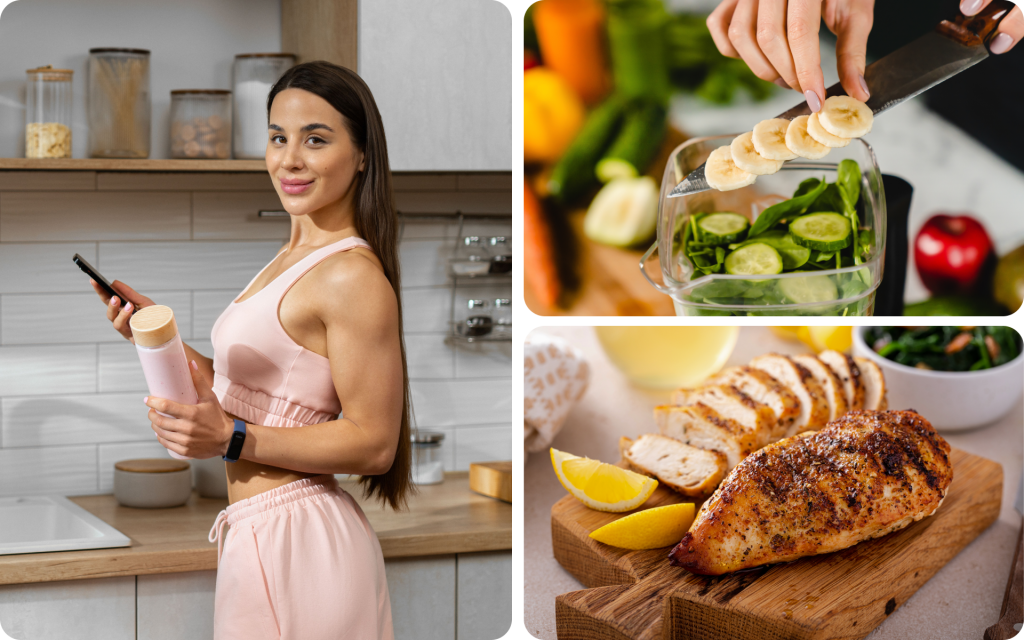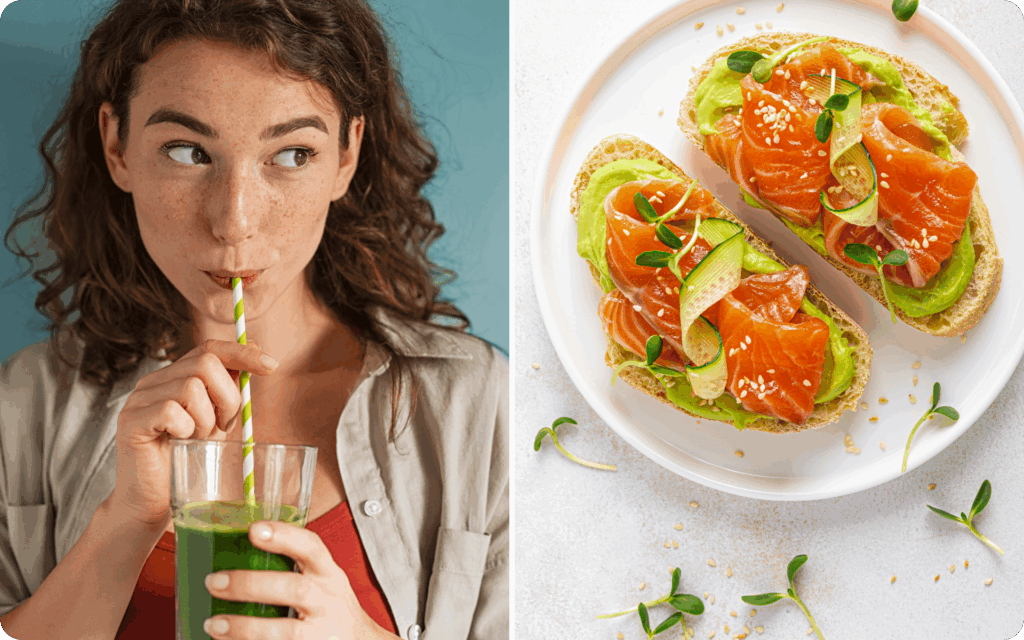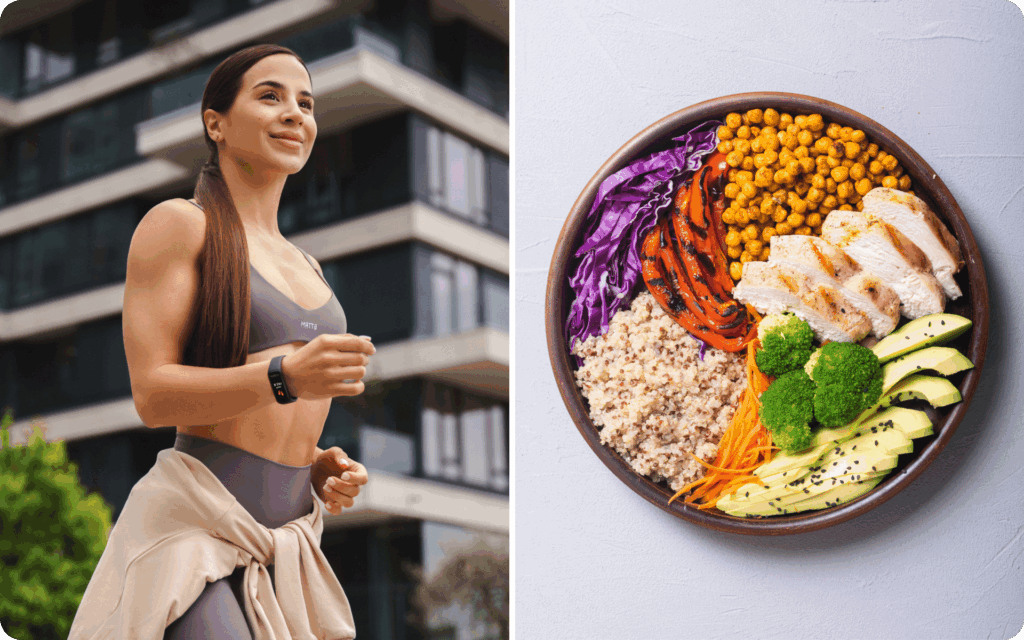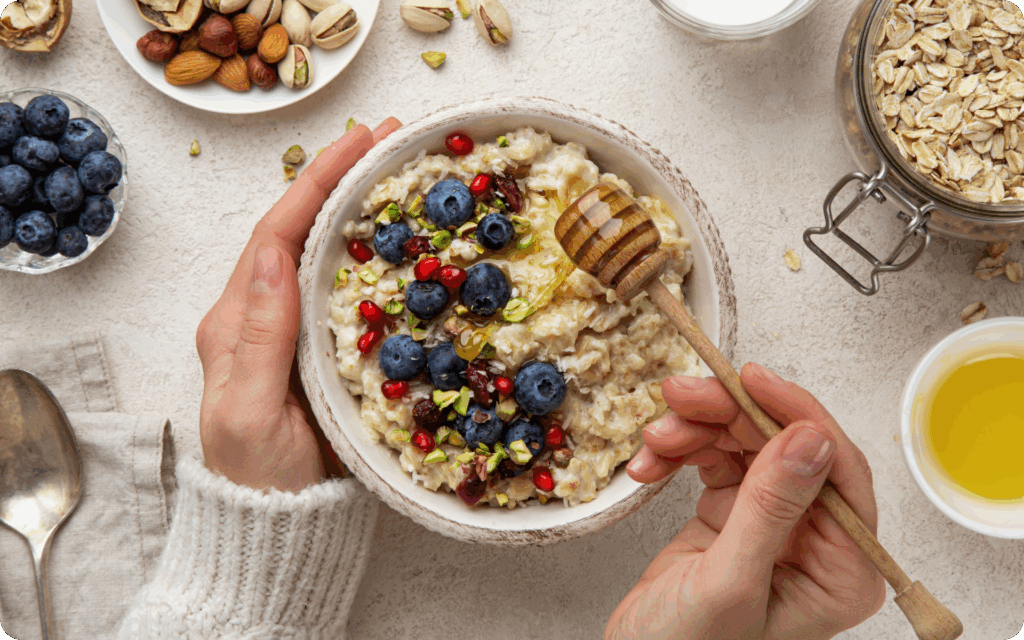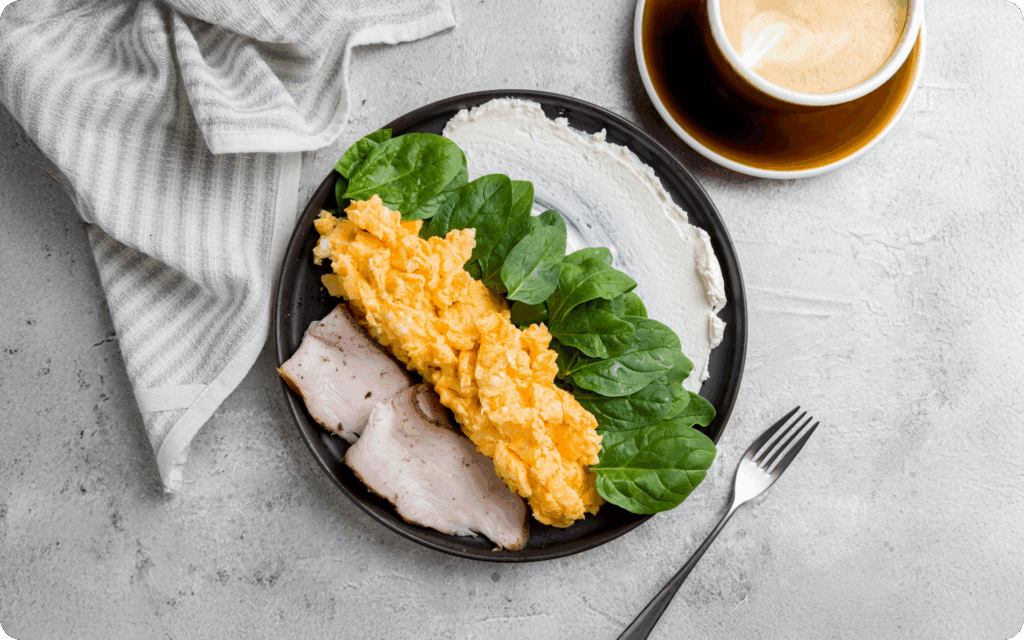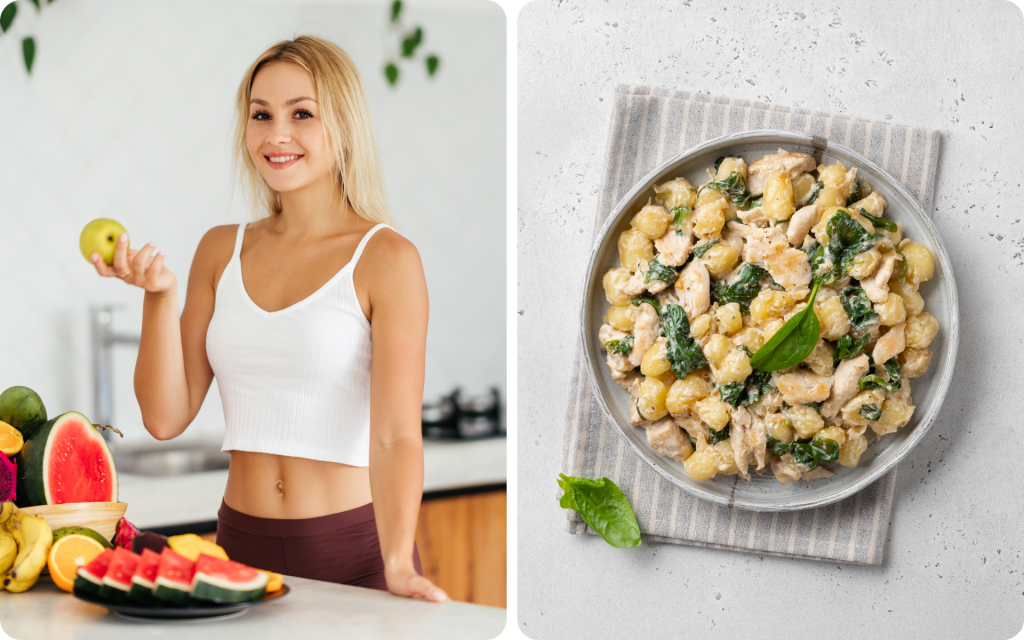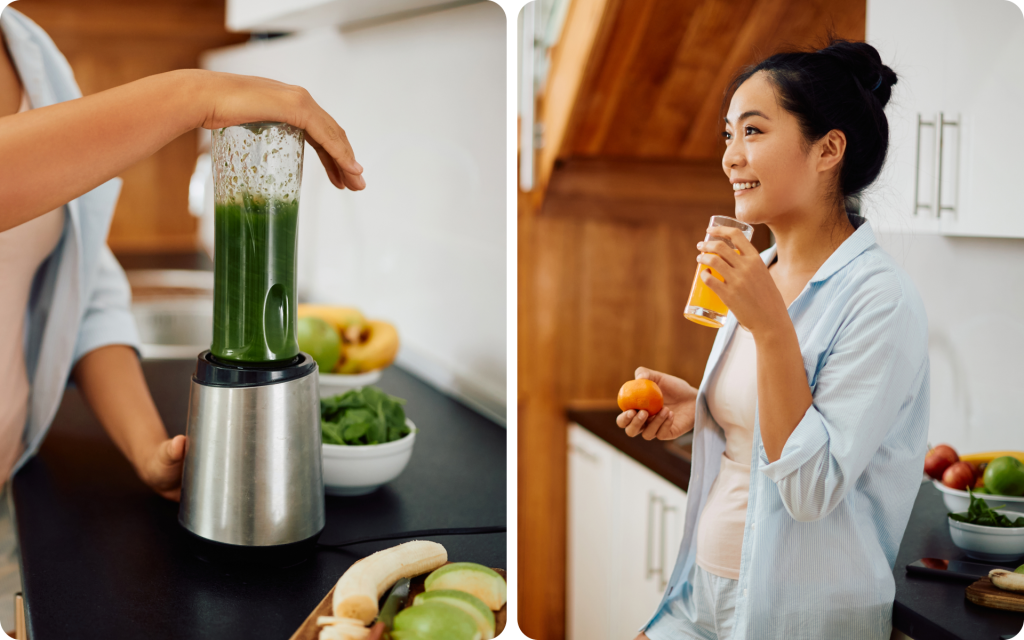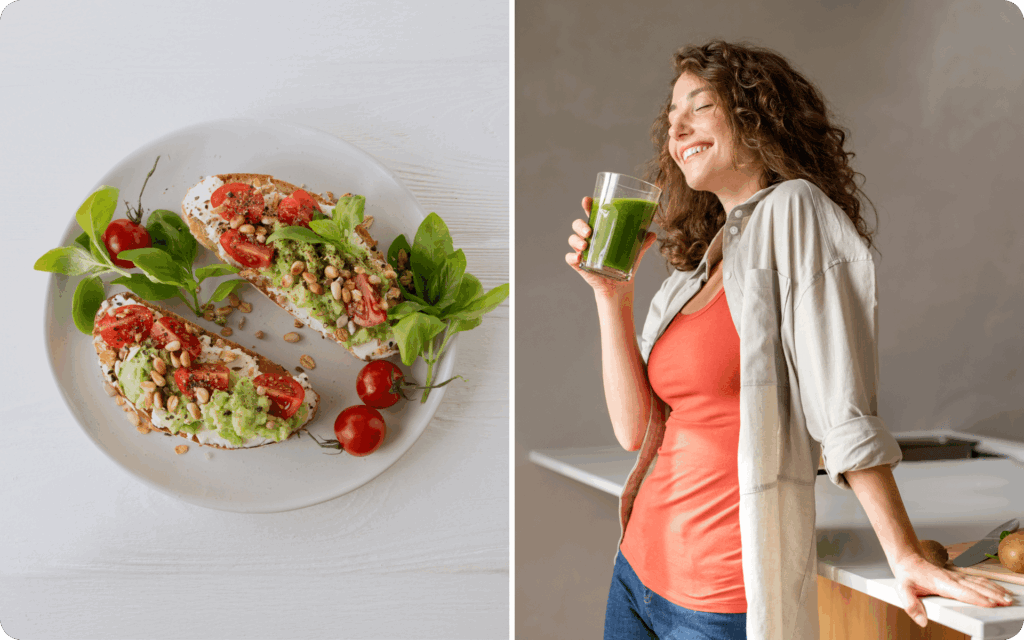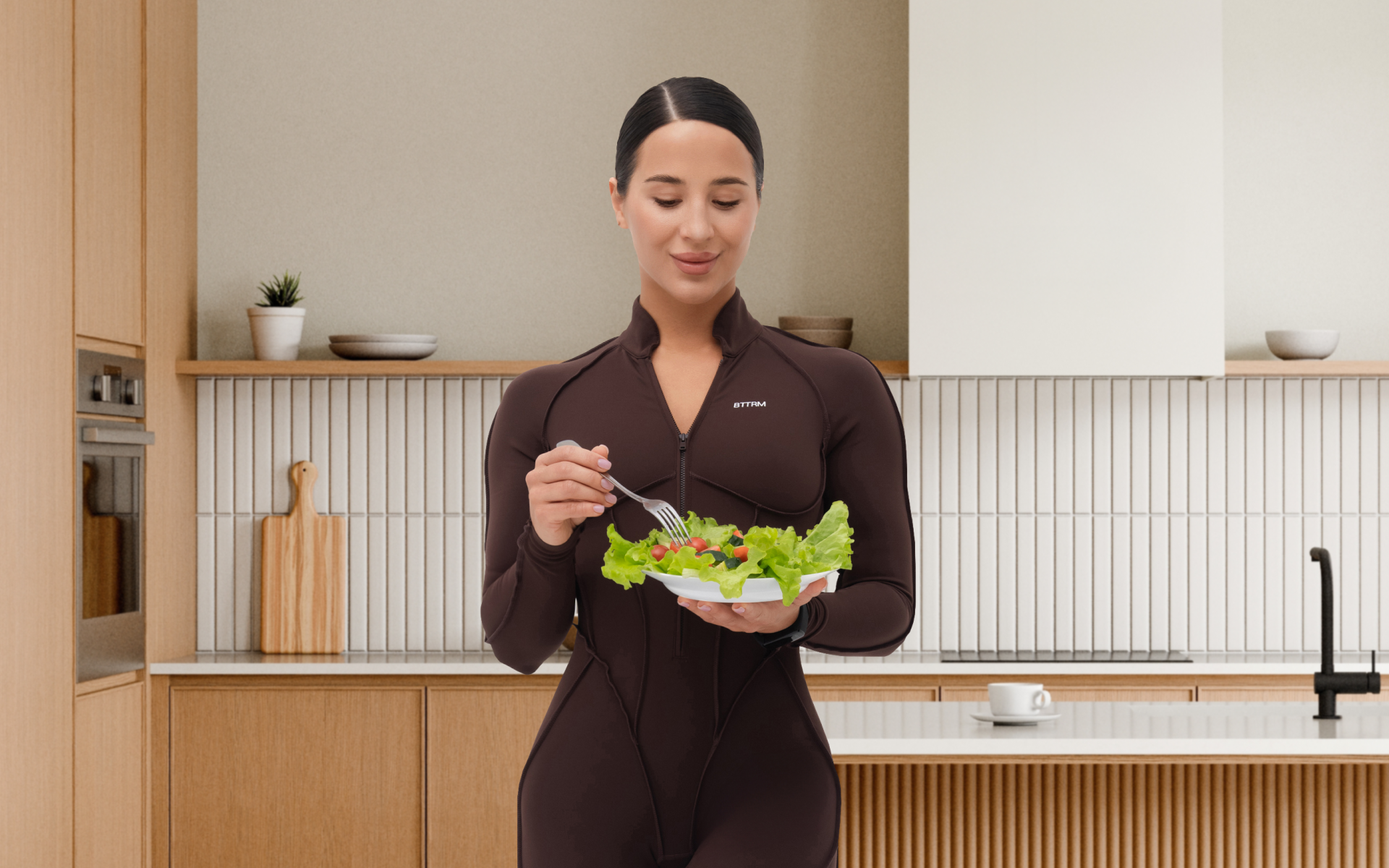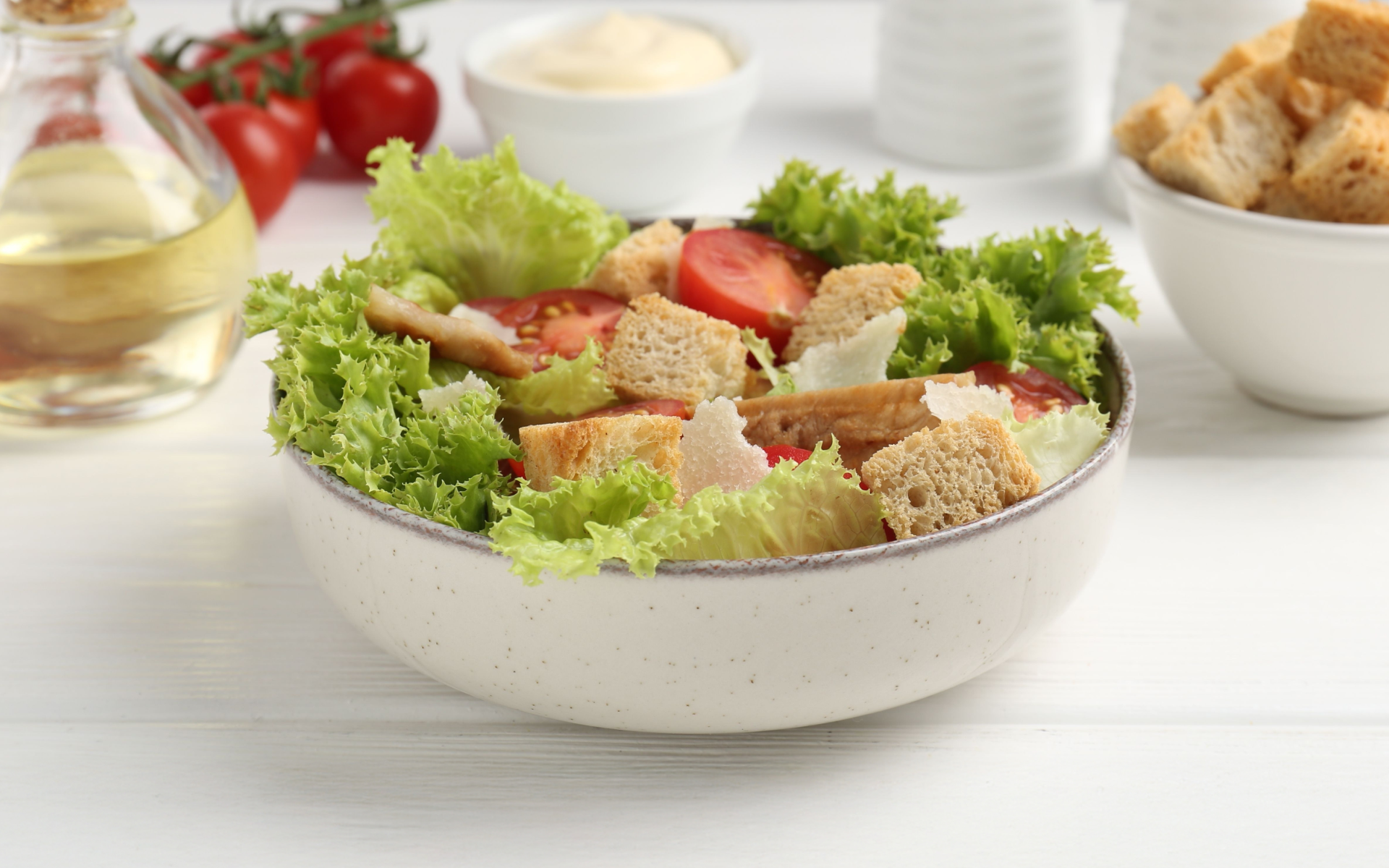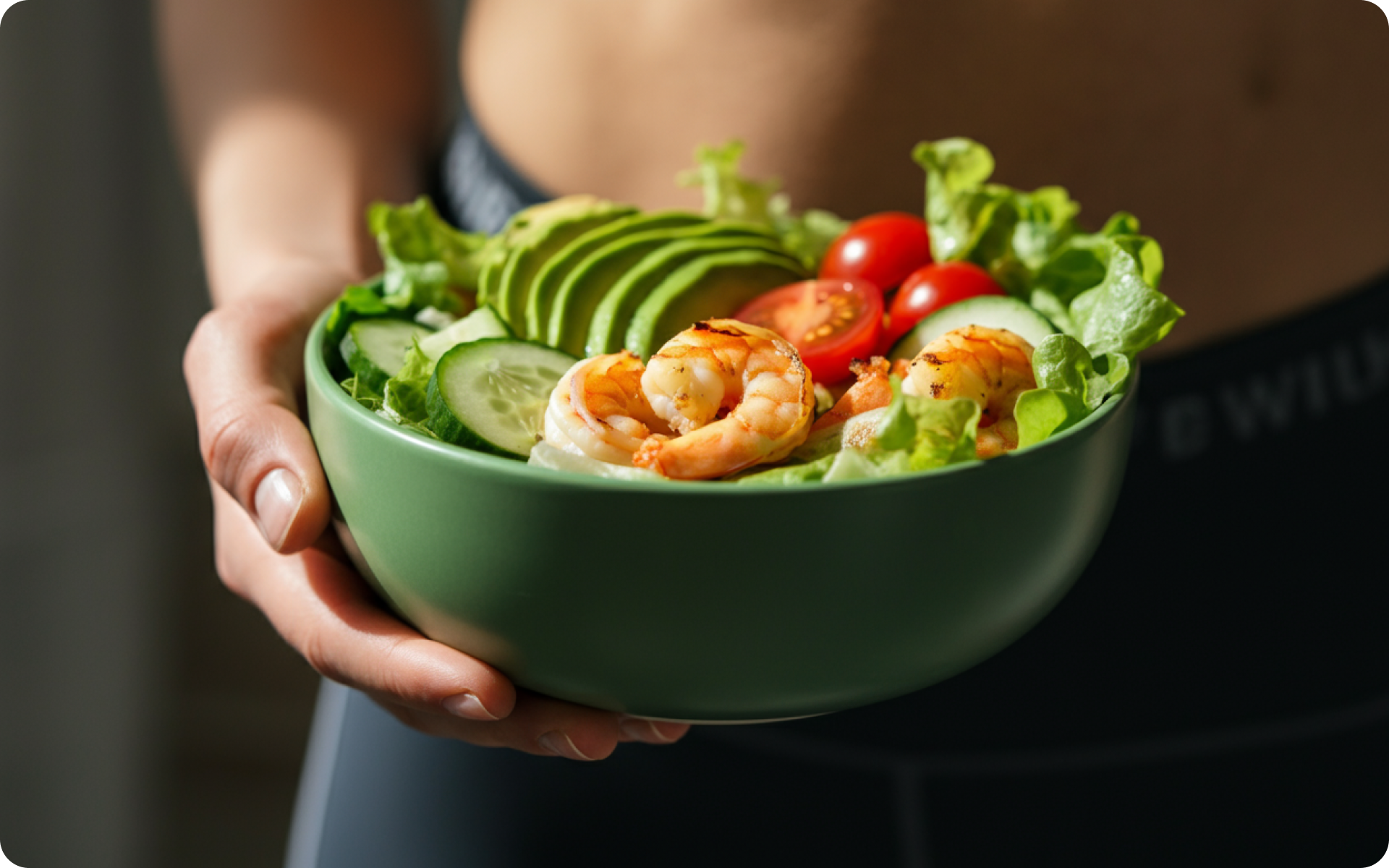A 5,000-calorie meal plan represents one of the most intensive nutritional approaches to muscle building. This substantial caloric intake isn’t suitable for everyone, but for those who need it, understanding how to structure these calories properly can mean the difference between lean muscle gains and unwanted fat accumulation.
This comprehensive guide will walk you through the science-backed strategies for implementing a 5,000-calorie diet effectively. You’ll discover which foods to prioritize, how to balance your macronutrients, and what realistic expectations to set for your bulking journey.
Is 5,000 Calories a Day Enough to Bulk?
The short answer depends entirely on your individual circumstances. A 5,000-calorie meal plan for bodybuilding represents a significant caloric surplus that goes far beyond what most people require for muscle growth.
To understand if you need this many calories, you must first calculate your total daily energy expenditure (TDEE). Your TDEE accounts for several factors, including your basal metabolic rate, activity level, exercise intensity, age, sex, and height (1, 2). For muscle growth to occur, you need to consume more calories than you burn each day – creating what nutritionists call a caloric surplus (3).
Most individuals require a surplus of 300-500 calories above their TDEE to gain muscle effectively. However, certain populations may need dramatically higher intakes:
Extremely Active Athletes: Competitive bodybuilders, powerlifters, or athletes training multiple times daily may burn 3,500-4,000 calories through their training alone.
Naturally Lean Individuals: Some people have exceptionally fast metabolisms, requiring massive caloric intake just to maintain their current weight.
Tall, Heavy Individuals: Larger body frames naturally require more energy for basic physiological functions.
When it comes to weight loss, progress is made by inches, not miles, so it’s much harder to track and a lot easier to give up. The BetterMe: Health Coaching app is your personal trainer, nutritionist, and support system all in one. Start using our app to stay on track and hold yourself accountable!
The key principle remains consistent: you must be in a caloric surplus to gain weight and build muscle. Without adequate energy intake, your body cannot synthesize new muscle tissue, regardless of how intensely you train (4).
However, there’s an exception to this rule. It’s possible for individuals with a higher body mass index (BMI) to gain muscle while in a caloric deficit. This is because fat tissue can be converted into energy to support muscle growth (3).
In this scenario, it’s important to prioritize protein intake and continue strength training to help maintain and build muscle mass while losing fat (5, 6).
Beginners who have not yet reached their genetic potential for muscle growth may also be able to gain muscle while in a caloric deficit due to their body’s sensitivity to training and nutrition (3).
However, for many individuals who are looking to build muscle, being in a slight caloric surplus is necessary.
Read more: High-Protein Breakfast Without Eggs or Dairy: A Guide to Energizing Mornings
What Can I Eat to Get 5,000 Calories a Day?
Reaching 5,000 calories per day requires strategic food selection. The quality of these calories matters significantly – empty calories from ultra-processed foods won’t support optimal muscle growth and may lead to excessive fat gain.
Complex Carbohydrates
Carbohydrates should form the foundation of your high-calorie foods for bulking. These energy-dense options provide sustained fuel for intense training sessions:
- Oatmeal with mixed berries and honey
- Sweet potatoes roasted with olive oil
- Brown rice and quinoa bowls
- Whole-grain pasta with lean proteins
- Whole-grain breads and bagels
- Beans and legumes for added fiber and plant-based protein
Lean Protein Sources
Protein supports muscle recovery and growth (7). You should aim for a variety of protein sources that together provide all essential amino acids:
- Chicken breast and thighs
- Lean beef and bison
- Salmon, tuna, and other fatty fish
- Greek yogurt and cottage cheese
- Eggs and egg whites
- Milk and protein powders
- Turkey and lean pork
- Lentils, beans, and chickpeas
- Soy products such as tofu, tempeh, and edamame
Healthy Fats
Fats provide the most calories per gram (8) and support hormone production, which is essential for muscle building (9):
- Nuts and nut butters (almonds, peanuts, cashews)
- Avocados and guacamole
- Olive oil, avocado oil, and other vegetable oils
- Seeds (chia, flax, pumpkin)
- Fatty fish rich in omega-3s
- Eggs (including the yolks)
- Cheese and full-fat dairy
High-Calorie, Low-Carb Foods
For those who are monitoring their carbohydrate intake while bulking, these options provide substantial calories without excessive carbs:
- Nuts and seeds
- Meat and poultry
- Full-fat dairy products
- Avocados
- Olive oil and other oils
- Fatty fish
- Nut and seed butters
For more details about high-calorie low-carb foods, take a look at our prior publication.
How to Balance Macros in a 5,000-Calorie Meal Plan
Proper macronutrient distribution ensures your 5,000 calories support muscle growth rather than just fat storage. Recommendations suggest the following breakdown (10):
Protein: 10-35% of total calories (125-437 grams)
Protein provides the amino acids that are necessary for muscle protein synthesis (11). You can also aim to consume 1.4-2.0 grams per kilogram of body weight (12).
Carbohydrates: 45-65% of total calories (563-813 grams)
Carbohydrates fuel your training sessions and replenish muscle glycogen stores (13). This substantial intake supports high-volume training programs.
Fats: 20-35% of total calories (111-194 grams)
Healthy fats support hormone production, including growth hormone and testosterone, both of which are essential for muscle development (9, 14).
These ranges allow for individual adjustments based on training style, body composition goals, and personal tolerance. Athletes who are involved in high-volume training may benefit from higher carbohydrate percentages, while those who are focused on strength may prefer slightly higher protein intakes.
The timing of these macronutrients also matters. Consuming carbohydrates and protein around training sessions optimizes recovery and muscle protein synthesis. If you’re curious about the 5000-calorie diet, check out our earlier article.
What Is an Example of a Healthy 5,000-Calorie Meal Plan?
Here’s a practical three-day rotation that demonstrates how to eat 5,000 calories per day while maintaining nutritional quality:
Day 1
Breakfast (850 calories)
- 1 cup oatmeal with 1 sliced banana and 2 tbsp almond butter
- 1 cup whole milk
- 2 whole eggs scrambled in 1 tsp olive oil
Mid-Morning Snack (400 calories)
- Protein smoothie: 1 scoop whey protein, 1 cup milk, 1 tbsp peanut butter, 1 handful berries
Lunch (1,200 calories)
- 8 oz grilled chicken breast
- 1.5 cups brown rice
- 1 medium avocado
- Mixed vegetables sautéed in 1 tbsp olive oil
Afternoon Snack (500 calories)
- 1 cup Greek yogurt with 2 tbsp granola and honey
- 1 oz mixed nuts
Dinner (1,400 calories)
- 8 oz lean beef
- 2 medium sweet potatoes
- Large mixed salad with 2 tbsp olive oil dressing
- 1 cup steamed broccoli
Evening Snack (650 calories)
- 2 slices whole-grain toast with 3 tbsp peanut butter
- 1 cup whole milk
- 1 medium banana
Day 2
Breakfast (900 calories)
- 3-egg omelet with cheese and vegetables
- 2 slices whole-grain toast with butter
- 1 cup orange juice
- 1 cup whole milk
Mid-Morning Snack (450 calories)
- Trail mix: 2 oz nuts, seeds, and dried fruit
- 1 cup chocolate milk
Lunch (1,150 calories)
- 8 oz salmon fillet
- 1.5 cups quinoa
- 1 tbsp olive oil drizzled over roasted vegetables
- 1 dinner roll with butter
Afternoon Snack (600 calories)
- Protein bar (300 calories)
- 1 large apple with 2 tbsp almond butter
Dinner (1,300 calories)
- 8 oz lean pork tenderloin
- 2 cups pasta with marinara sauce
- Caesar salad with dressing
- 1 cup green beans with almonds
Evening Snack (600 calories)
- 1 cup cottage cheese with fruit
- 2 tbsp nuts
- 2 whole-grain crackers
Day 3
Breakfast (800 calories)
- 2 whole-grain waffles with syrup
- 2 turkey sausage links
- 1 cup whole milk
- 1 cup fresh berries
Mid-Morning Snack (500 calories)
- Smoothie bowl: protein powder, banana, granola, coconut flakes, almond milk
Lunch (1,200 calories)
- Turkey and avocado sandwich on whole-grain bread
- 2 oz cheese
- 1 cup lentil soup
- 1 oz pretzels
- 1 cup whole milk
Afternoon Snack (450 calories)
- Energy balls: oats, peanut butter, honey, dark chocolate chips
- 1 cup chocolate milk
BetterMe is your fast-track ticket to long-lasting weight loss! Tailor your fitness journey and maximize your results with just a couple of swipes!
Dinner (1,400 calories)
- 8 oz white fish with lemon butter sauce
- 2 cups wild rice pilaf
- Roasted root vegetables with olive oil
- Dinner salad with nuts and dressing
Evening Snack (650 calories)
- Greek yogurt parfait with granola and fruit
- 2 tbsp mixed nuts
- 1 cup whole milk
Read more: Low Carb Meal Prep For The Week: How To Start, Expected Weight Loss, & Simple Recipes
How Much Weight Will I Gain if I Eat 5,000 Calories?
Weight gain on a 5,000-calorie diet will depend on your starting TDEE and body composition. The fundamental principle is that 3,500 calories equals approximately one pound of body weight.
If your TDEE is 3,500 calories, consuming 5,000 calories creates a daily surplus of 1,500 calories. This theoretically translates to three pounds of weight gain per week. However, this calculation oversimplifies the complex process of body composition changes.
Realistic Expectations for Muscle vs. Fat Gain
During an aggressive bulk with proper training, you might expect:
- 40-60% of weight gain as lean muscle mass
- 40-60% as fat and water weight
- Higher muscle-to-fat ratios in beginners
- Lower ratios in advanced trainees
Weekly Weight Gain Targets
Research suggests optimal muscle building occurs with weight gains of 0.5-1 pounds per week (15). Gains exceeding this range typically result in disproportionate fat accumulation. Our previous post goes into great detail about the high-calorie foods for bulking.
Factors Affecting Body Composition Changes
Training intensity and consistency significantly influence how your body utilizes excess calories. Progressive overload in resistance training signals your body to direct nutrients toward muscle protein synthesis rather than fat storage (16).
Genetics also plays a substantial role. Some individuals naturally partition calories more favorably toward muscle growth, while others may be more prone to fat storage.
Sleep quality and stress management affect hormone levels that control muscle building and fat storage (17). Poor sleep or chronic stress can shift your body toward fat accumulation even with optimal nutrition.
A 5,000-calorie diet is appropriate for a very select group of individuals. Competitive bodybuilders often require this intake during aggressive bulking phases, particularly those who are naturally lean or have high training volumes. Large-framed athletes (over 200 pounds) with intense training schedules may also need this caloric level. In addition, individuals recovering from illness or those with medically diagnosed eating disorders may require supervised high-calorie intake. Most recreational fitness enthusiasts will find this intake excessive and counterproductive. Focus on calorie-dense, nutrient-rich foods to reach this target efficiently. Nuts and nut butters provide healthy fats and substantial calories in small volumes. Whole grains such as oats, quinoa, and brown rice offer sustained energy. Lean proteins such as chicken, fish, and dairy products support muscle building. Healthy oils such as olive and avocado oil can be added to meals for extra calories. Dried fruits, granola, and whole milk are additional calorie-boosters that don’t require large portion sizes (18). Most people find success with 6-8 meals or eating occasions throughout the day. This typically includes three main meals (800-1,200 calories each) and 3-5 snacks (300-600 calories each). Eating every 2-3 hours helps manage appetite and prevents overwhelming portion sizes at individual meals. Some individuals prefer larger, less frequent meals, while others do better with smaller, more frequent eating occasions. The key is to find a pattern you can maintain consistently while meeting your caloric targets. For the right individual under proper circumstances, 5,000 calories can be healthy and necessary. However, this intake level requires careful planning to ensure nutritional adequacy and prevent health complications. Regular monitoring of body composition, blood markers, and overall health is essential. The diet should emphasize whole foods rather than ultra-processed options to avoid nutrient deficiencies (19). Long-term adherence to such high caloric intake without appropriate energy expenditure can lead to metabolic issues and increased disease risk (20). Consulting a registered dietitian is strongly recommended before starting this level of caloric intake.Frequently Asked Questions
Who should follow a 5,000-calorie diet?
What foods help you reach 5,000 calories daily?
How many meals do you need to eat per day for 5,000 calories?
Is 5,000 calories per day healthy?
The Bottom Line
Successfully implementing a 5,000-calorie meal plan requires more than just eating more food – it demands strategic planning, consistent execution, and regular assessment of your progress and health markers.
Start by gradually increasing your caloric intake rather than immediately jumping to 5,000 calories. This allows your digestive system to adapt and helps you identify which foods and meal timing work best for your lifestyle.
Track your body composition changes weekly, focusing on muscle gain rather than just total weight increase. Take progress photos and measurements to monitor how your body responds to the increased caloric intake.
Remember that this level of caloric intake is typically temporary and goal-specific. Most individuals will need to adjust their intake as their body composition and training demands change over time. When it’s executed properly, a 5,000-calorie meal plan can be a powerful tool for achieving significant muscle growth and athletic performance improvements.
DISCLAIMER:
This article is intended for general informational purposes only and does not serve to address individual circumstances. It is not a substitute for professional advice or help and should not be relied on for making any kind of decision-making. Any action taken as a direct or indirect result of the information in this article is entirely at your own risk and is your sole responsibility.
BetterMe, its content staff, and its medical advisors accept no responsibility for inaccuracies, errors, misstatements, inconsistencies, or omissions and specifically disclaim any liability, loss or risk, personal, professional or otherwise, which may be incurred as a consequence, directly or indirectly, of the use and/or application of any content.
You should always seek the advice of your physician or other qualified health provider with any questions you may have regarding a medical condition or your specific situation. Never disregard professional medical advice or delay seeking it because of BetterMe content. If you suspect or think you may have a medical emergency, call your doctor.
SOURCES:
- Control of energy expenditure in humans (2016, nature.com)
- Factors Affecting Energy Expenditure and Requirements – Dietary Reference Intakes for Energy (2023, ncbi.nlm.nih.gov)
- Is an Energy Surplus Required to Maximize Skeletal Muscle Hypertrophy Associated With Resistance Training (2019, frontiersin.org)
- International society of sports nutrition position stand: diets and body composition (2017, jissn.biomedcentral.com)
- Preserving Healthy Muscle during Weight Loss (2017, sciencedirect.com)
- Body Recomposition: Can Trained Individuals Build Muscle and Lose Fat at the Same Time? (2020, journals.lww.com)
- Protein for exercise and recovery (2009, pubmed.ncbi.nlm.nih.gov)
- Calories (2022, ncbi.nlm.nih.gov)
- The Importance of Fatty Acids as Nutrients during Post-Exercise Recovery (2020, pmc.ncbi.nlm.nih.gov)
- Description of the Acceptable Macronutrient Distribution Range (2024, ncbi.nlm.nih.gov)
- Role of Essential Amino Acids in Protein Synthesis and Muscle Growth (2023, openaccessjournals.com)
- International Society of Sports Nutrition Position Stand: protein and exercise (2017, jissn.biomedcentral.com)
- Fundamentals of glycogen metabolism for coaches and athletes (2018, pmc.ncbi.nlm.nih.gov)
- Manipulation of Dietary Intake on Changes in Circulating Testosterone Concentrations (2021, pmc.ncbi.nlm.nih.gov)
- Nutrition Recommendations for Bodybuilders in the Off-Season: A Narrative Review (2019, pmc.ncbi.nlm.nih.gov)
- Signaling Pathways that Mediate Skeletal Muscle Hypertrophy: Effects of Exercise Training (2011, intechopen.com)
- Exploring the Science of Shape: How Physical Activity, Sleep, and Stress Affect Body Composition (2025, pmc.ncbi.nlm.nih.gov)
- Nutrition (2023, health.harvard.edu)
- Nutrition: Micronutrient Intake, Imbalances, and Interventions (2023, ncbi.nlm.nih.gov)
- Pathways and mechanisms linking dietary components to cardiometabolic disease: thinking beyond calories (2018, pmc.ncbi.nlm.nih.gov)
